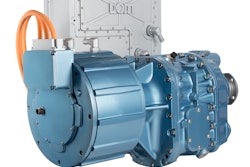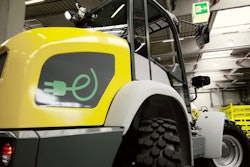Those selling components for electric vehicles and those wishing to make the vehicles themselves must seek where the majority of the money is spent and will be spent. That must lead them to industrial and commercial electric vehicles because today these represent 60% of the value of the electric vehicle market. Indeed, this sector is set to grow 4.5 times in the next decade. Industrial and commercial electric vehicles include heavy industrial vehicles, the term referring to heavy lifting, as with forklifts.
Then we have buses, trucks, taxis and the other light industrial and commercial vehicles. There are also a few work boats and commercial boats, and one day there will be commercial electric aircraft but this is really a story about the burgeoning demand for off-road industrial vehicles and on-road commercial vehicles. In particular, industrial electric vehicles make industry more efficient and commercial electric vehicles reduce congestion. Both of them greatly reduce pollution and align closely with government objectives concerning industry and the environment, yet they minimally depend on subsidy, in contrast with some other electric vehicle types.
This report covers the technical and market trends for industrial and commercial vehicles whether hybrid or pure electric, putting it in the context of electric vehicles overall and including the activities of a host of manufacturers of the vehicles and their components and even providing future technological development roadmaps.
The market for electric industrial vehicles is already large because, by law, forklifts have to be electric when used indoors. Little growth remains in this market but outdoors almost all earthmoving and lifting vehicles use the conventional internal combustion engine. That is about to change dramatically because hybrid electric versions reduce cost of ownership and exposure to price hikes with fossil fuels. Hybrids increasingly perform better as well, with more power from stationary, ability to supply electricity to other equipment and other benefits including less noise and pollution. On the other hand, airports, often government owned or funded, are under great pressure to finish converting their ground support equipment (GSE) to pure electric versions both on and off the tarmac partly using federal grants.
Yet another industrial trend is for use of electric vehicles to replace slow and often dangerous manual procedures. Sometimes a self-powered indoor crane replaces scaffolding. An electric stair climber replaces human effort and possible injury. On the other hand, sit-on floor cleaners in buildings, sit-on ice cleaners in ice rinks, outrider vehicles carried on trash collection trucks and a host of similar solutions speed processes and reduce injuries and costs.
Buses, trucks, taxis and the other light industrial and commercial vehicles are going electric for similar reasons but we must add the desire of national and local governments, who buy many of them, to go green, even where there is no payback. However, the size and growth of the industrial and commercial sector is less dependent on government funding and tax breaks than the more fragile market for electric cars, particularly pure electric ones. Excitingly, most of the electric vehicle technologies are changing and improving hugely and innovation often comes here before it is seen in the more publicised electric vehicle sectors such as cars.
Asynchronous traction motors were first widely used on forklifts: their benefits of longer life, less maintenance, low cost and freedom from magnet price hikes and heating problems are only later being seen in a few cars. Ultracapacitors otherwise known as supercapacitors permit very fast charging of buses whether by the new Level 3 charging stations or regenerative braking and they release huge surges of power when the bus is full and starting on a hill. Gas turbine range extenders have been on some buses for 12 years but they are only now being planned for cars. Fuel cells will be viable in fleets where the expensive hydrogen distribution is manageable - not for cars across the world. Energy harvesting shock absorbers about to hit the market will be very viable on buses and trucks where they can put up to 12 kW into the battery whereas such devices on cars will take longer to prove.
Nevertheless, it is important to look at industrial and commercial electric vehicles as part of all electric vehicles out there - as we do - because it is increasingly true that one company will produce EVs for many end uses and even make key components. This achieves the product reliability and cost advantages that come from highest volume manufacture based on standardization and shared research.



















